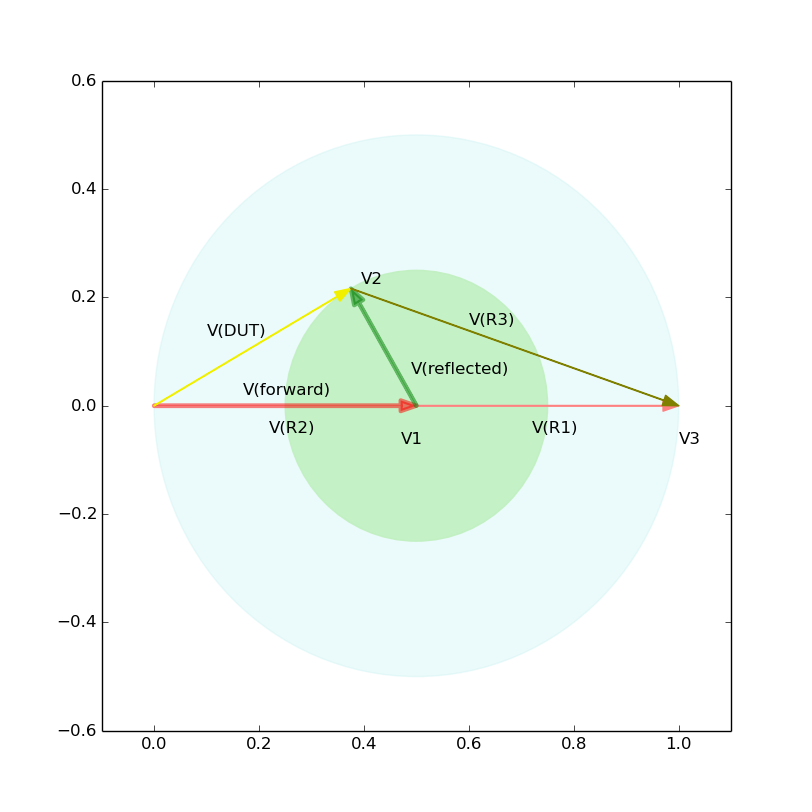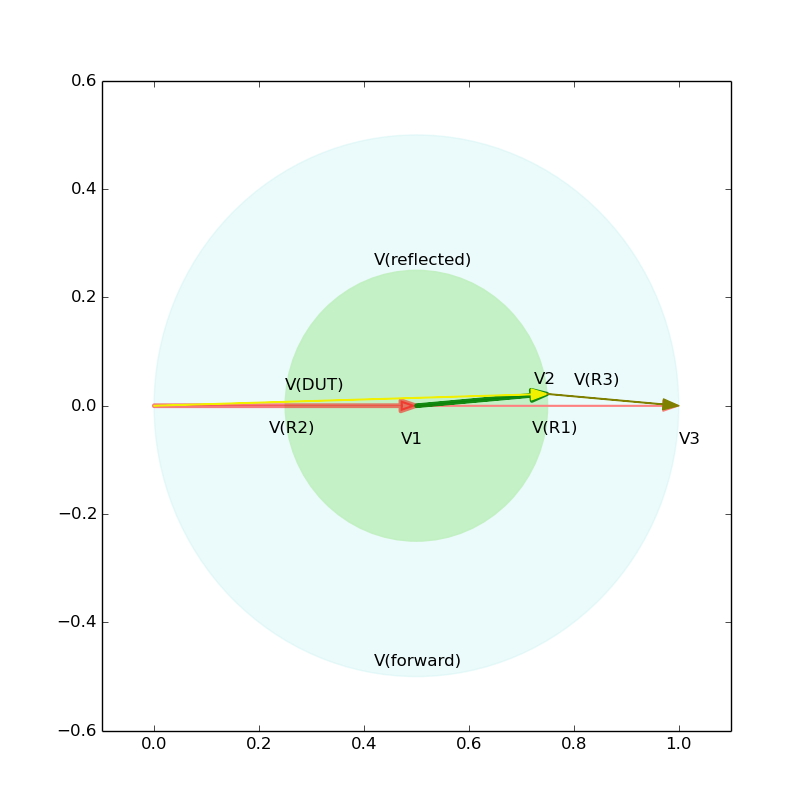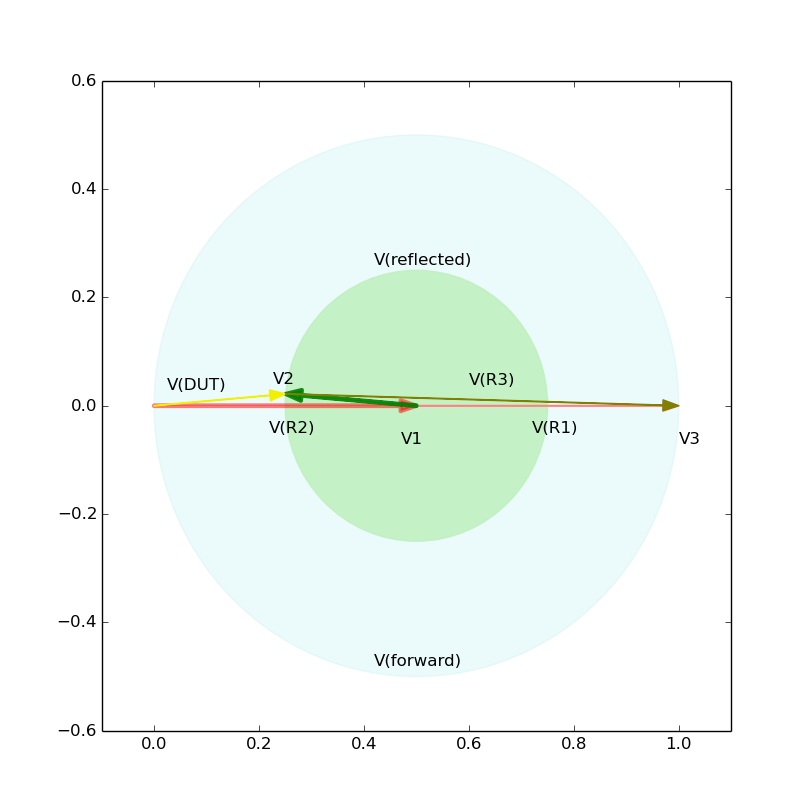Let’s now think of a case, in which the reflection coefficient, gamma, is 0.5, or abs(gamma)=0.5 to be more exact. By definition, it follows that abs(V(reflected))/abs(V(forward))=0.5, but the phase of the reflected wave against the forward wave could be anything. Suppose the DUT is your antenna with some length of a coax cable between the impedance bridge and the antenna. Depending of the electrical length of the cable, the phase could be 0 degrees:
or 180 degrees:
or anything between zero and 360 degrees as is typically shown in the first figure.
In the 0 degrees case, V(DUT):V(R3)=3:1, which means Z(DUT)=50*3 [ohm] since Z(R3)=50 [ohm], and in the 180 degrees case, V(DUT):V(R3)=1:3, and Z(DUT)=50/3 [ohm].
Or equivalently, if Z(DUT)=50*3 [ohm], then gamma=(50*3-50)/(50*3+50)=0.5, and if Z(DUT)=50/3 [ohm], then gamma=(50/3-50)/(50/3+50)=-0.5, both from the well-known equation:
gamma=(cz-z0)/(cz+z0)



